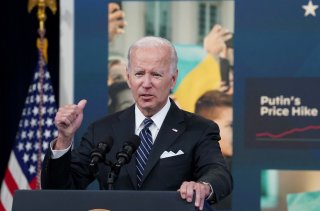Home Prices Continue to Cool at Record Pace
The annual rate of price appreciation reached 17.3 percent, down from 19.3 percent/
Persistent inflationary pressures and elevated mortgage rates are the primary driving forces causing U.S. housing demand to plummet, according to a new CNBC report.
Citing data compiled by Black Knight, a mortgage software, data, and analytics firm, home prices are still higher than they were last year, but the price gains decelerated at the fastest pace on record in June. The annual rate of price appreciation reached 17.3 percent, down from 19.3 percent.
“The slowdown was broad-based among the top fifty markets at the metro level, with some areas experiencing even more pronounced cooling,” Ben Graboske, president of Black Knight Data & Analytics, told the business news outlet.
“In fact, 25 percent of major U.S. markets saw growth slow by three percentage points in June, with four decelerating by four or more points in that month alone,” he continued.
The hardest hit areas are those that previously boasted the highest home prices in the nation. For example, average home values in San Jose, California, have declined 5.1 percent in the past two months alone, the largest drop of any of the top markets. In Seattle, prices are down 3.8 percent over the same period. San Francisco, San Diego, and Denver round out the top five markets with the heftiest price corrections.
Seemingly supporting Black Knight’s data, a new report from Redfin is indicating that popular migration destinations where home prices soared during the course of the Covid pandemic are most likely to see the effects of a housing downturn.
“What goes up must come down. Home prices soared at an unsustainable rate in many pandemic homebuying hotspots,” Redfin’s senior economist Sheharyar Bokhari said in a statement. “Additionally, places where people tend to have high debt compared with their income and home equity are vulnerable because their residents are more likely to foreclose or sell at a loss.”
On a more positive note, Bokhari added that if “the U.S. does enter a recession, we’re unlikely to see a housing-market crash like in the Great Recession because the factors affecting the economy are different: Most homeowners have a fair amount of home equity and not much debt and unemployment is low.”
Meanwhile, with the average rate on the popular thirty-year fixed-rate mortgage sitting in the lower 5-percent range, a new Zillow analysis has revealed that today's home shoppers can expect to pay about 62 percent more per month to purchase a typically priced U.S. home than they would have a year ago.
The price increases are even worse for those with lower credit scores. The analysis noted that buyers with “fair” credit could be paying close to $290 more on their monthly mortgage payment than those with “excellent” credit. It found that a borrower with an “excellent” credit score—between 760 and 850—is able to qualify for a thirty-year mortgage with a 5.099 percent interest rate. For the same loan, a similar borrower with a “fair” credit score—between 620 and 639—is only able to qualify for a 6.688 percent rate.
Based on the current price of a typical U.S. home—roughly $354,200—this equates to a $288 difference in monthly mortgage payments and $103,626 in extra interest over the life of the loan.
Ethen Kim Lieser is a Washington state-based Finance and Tech Editor who has held posts at Google, The Korea Herald, Lincoln Journal Star, AsianWeek, and Arirang TV. Follow or contact him on LinkedIn.
Image: Reuters.

